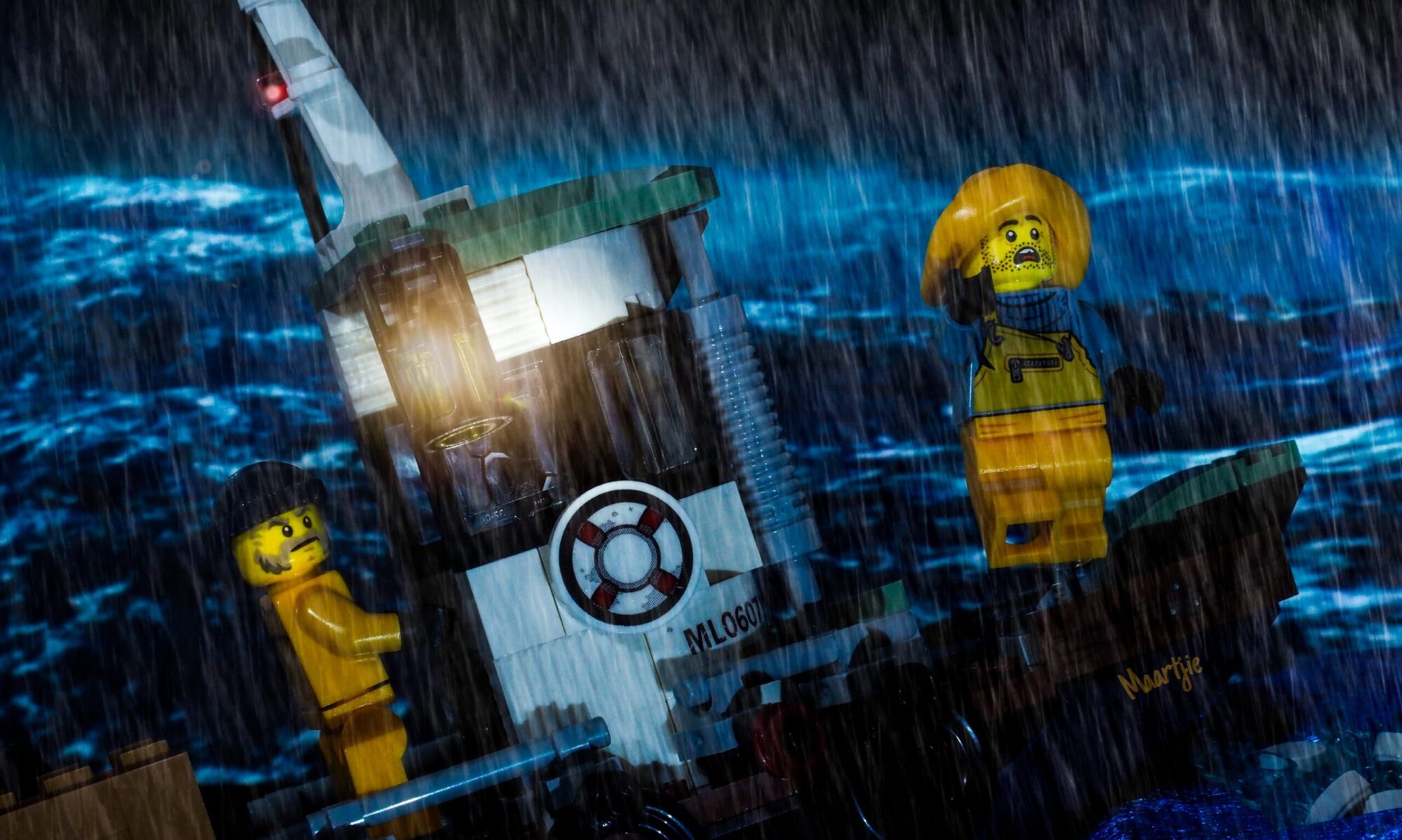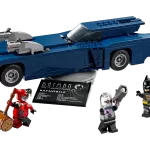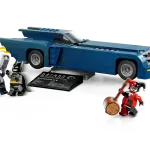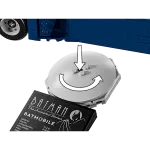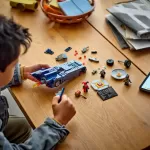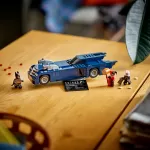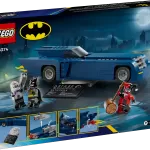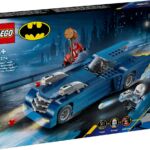By Clinton Matos (SAFOLs member)

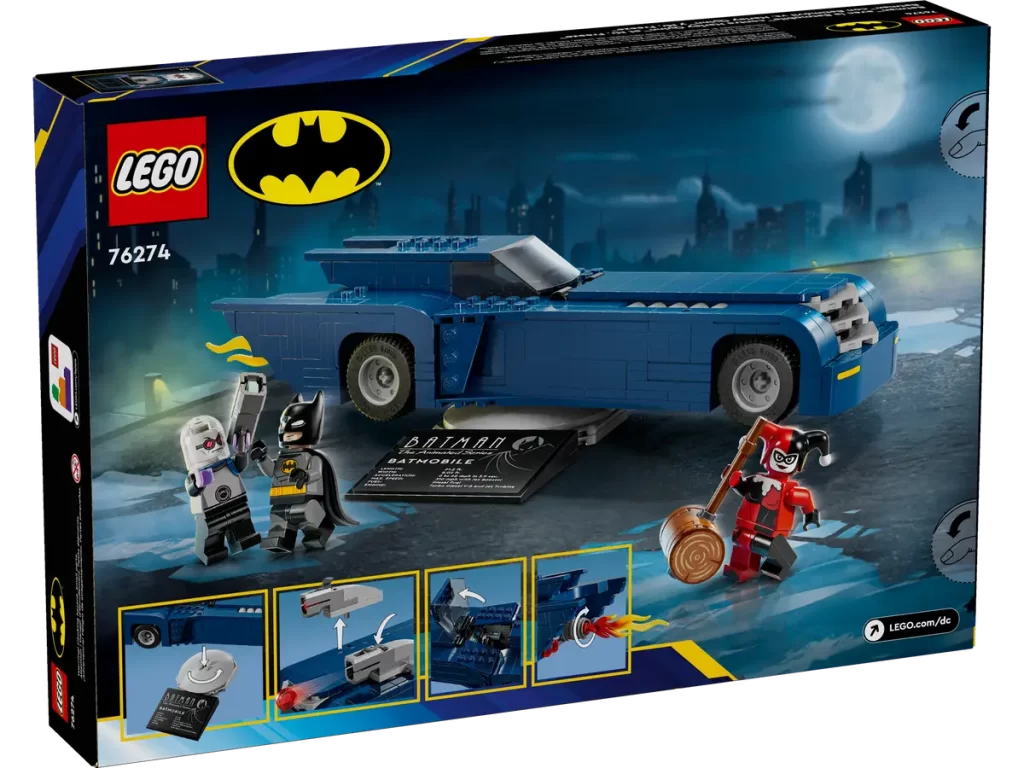
This set is arguably the most divisive Batmobile that LEGO® has ever put out. This latest entry into the long line of minifigure scale Batmobiles has made the bold choice to ditch Black (and very very dark grey) for Dark Blue to better suit its depiction in Batman: The Animated Series. On top of this the minifigure selection is not what many wanted and there are some other oddities that make it stick out.
With the set finally in hand we can address all of this, but first let’s get it built. Funnily enough this is actually the third time I am building this set. I have made it twice before digitally using the free instructions that LEGO® posts online. On a side note, many LEGO® fans still don’t know that the company posts online PDF instructions for most new sets the day they release. Checking out instructions of sets is not only a great way to learn new building techniques for free, but it may also convince you to pick up a set to experience the build with real bricks.
As to why I was building it digitally, it was an experiment to see if it could be rebuilt in Black instead of Dark Blue. More on that later.
Back to those real bricks and our review copy sent over by LEGO® came with four numbered paper bags but, of course, as LEGO® is still in a transitory period for bags this isn’t a guarantee for all buyers. There’s also a small instruction book and a sticker sheet.
Getting to build the Batmobile and it’s surprisingly simple. This version of the Batmobile isn’t particularly known for any outlandish shapes so it fits in well with LEGO’s blocky design language.
There’s very clever use of wedge plates in this set to make the back wider than the front for a more arrow-like, sleek design, and to replicate the iconic grill of this Batmobile. This grill makes use of black jumper tiles to make a half stud offset, so that the grill is angled back.

In the image above you can see this construction as well as some other tricks that the build has in store, such as the mechanism to move the back exhaust flame with a simple two gear system. You can also see, over the back axle, that hinge plates are used but they are locked down and can’t move.
This is not only a clever way to create thin overhangs, but moving hinges are used elsewhere in the set (you can see them used to create an angled intake right in front of that back axle). This is something LEGO® often does as it’s cheaper and easier – in terms of the production process – to reuse the same type of pieces in a set – if hinges were already needed for the angled intake, why not use them in other places in the build? It’s all very clever.
Arguably the most impressive part of the entire build are the wheel arches. These are built upside down using arch bricks and placed stud-side down with clips. You can see the right-hand side arch subassembly being attached in the image below, with the left hand side version already in place.

Now some may ask why this was done, as LEGO® already makes several inverted arch bricks that maybe could have been used. Well again it comes back to the manufacturer efficiency mentioned with the hinges – LEGO® can’t make both regular and inverted arches for every size, so this is a good way to show people it’s not always needed.
These front arches also highlight another part of the build I really love: the optional stud shooters. Yes, I know adult fans cringe when play functions are mentioned, but this set’s real trick is that the stud shooters are not only completely optional, but they can also be used as minifig weapons.
The stud shooters connect with a bar – you can see an empty bar hole in the front fenders – and minifigures can simply grab onto them.
For kids this opens up so much play possibility. Do we give a stud shooter to Harley Quinn and Mr. Freeze so they can better battle the Batmobile? (See the picture below for that) or does Batman get to keep them when he hops out of the vehicle, so he has some extra firepower? Yes yes Batman doesn’t use guns, just imagine they’re something else.

For me this is the ultimate in shooting functionality for sets: completely optional for those who don’t want it, minimal parts usage not to eat up the parts budget and multiple ways to play for the kids.
Once the Batmobile is finished the last part to build is the display stand which has a stickered plaque with some details about the vehicle. The other stickers in the set are used on the front bumper as headlights and inside the cabin to make controls and a screen for Batman.
Here we must pause because the inclusion of this plaque and display stand is strange. To explain why, here are the last three such sets released before this one, in reverse chronological order of release.
- 76224: Batmobile: Batman vs. The Joker
- 76239: Batmobile Tumbler: Scarecrow Showdown
- 76188: Batman Classic TV Series Batmobile
Of those three only 76188, the classic TV series version, included a display base with plaque. On top of this, the builds are almost identical save for an axle in the older one for better stability. I actually would have liked something like that on the new base, as the four-stud connection can be a bit loose.

While we don’t know why the other two Batmobiles didn’t get one of these bases (we’d again wager it was due to parts budget) it’s just a missed opportunity to make LEGO® Batmobiles something of a series that are all connected – and can be proudly displayed – with these bases. It’s also just strange to bring it back now after two other Batmobiles without them.
As for the completed Batmobile itself here, the final model is a real looker. There’s no real surprise to seeing it in real life compared to renders and marketing pictures. If the Dark Blue bothered, you in those pictures we don’t think the real thing will change your mind.
For me, I really like what’s on offer here. The combination of bold, blocky lines and some key curvature with the aforementioned wedges and some “wings” on the back give it a very slick look that leaves little to be desired.
As an avid LEGO® Batmobile collector, I am happy to have this one in my collection, even if it does stick out a little with its colour.
What I am less sure on is the minifigures. The Batman we get here is the same one included in the much more expensive 76271: Batman: The Animated Series Gotham City, but has a rubber rubber cape instead of the starched fabric cape the comes in 76271. Despite the inflexibility of the cape, Batman can still fit inside of the Batmobile cockpit as there’s a huge amount of empty space in there.
Our resident Batman minifig expert at SAFOLs, Barry Kay, is a fan of this version and how true it looks to the animated show.
But Batman isn’t the problem, it’s Harley Quinn and Mr. Freeze. Harley Quinn is included in so many LEGO® DC Comics sets that we really didn’t need another on here. This version looks close enough to the show, I suppose, but it’s very underwhelming after so many versions of this character. Mr. Freeze is more interesting, but his design is very boring here. Some arm printing and at least dual moulded legs to give him blue boots would have gone a long way to making this version not only a better minifigure, but also closer to the show.

As a total package I do think this set is worth your time and money. The Dark Blue is only distracting for a while and the minifigure selection is just on the boring side if nothing else. The build is simple enough with some key highlights and it may be the new gold standard for how to do stud shooters.
Does it come in black?
For those who dislike the Dark Blue colour I have some news: you can build this Batmobile in black.
All the dark blue colours are available in Black so it’s just a matter of sourcing your own parts from your inventory or Bricklinking until you have everything required.
Follow the instructions replacing the Dark Blue pieces with Black and you’re good to go.
I have a separate article on this matter including a parts list with everything you need, suggestions to make up for the lack of stickers and more advice for the project.

